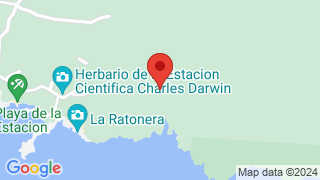Charles Darwin Galapagos




Charles Darwin
The giant tortoises called turtles Galapagos living an average of 150 years and are bred in captivity in this place. It was created in 1964, has a natural history interpretation center and executes educational tasks supporting the service of the Galapagos National Park . This station is also the center of operations for foreign scientists who arrive in the islands to deal with special research programs.
The Galapagos region is one of the most visited tourist places throughout the year, due to its great richness in flora and fauna , also for its gastronomy where its best-known typical dishes are Canchalagua ceviche and lobster . The place is not only prepared to receive tourists on holidays but every day, so do not hesitate to visit the Galapagos Islands.
Charles Darwin Research Station
Information for tourists Estacion Cientifica Charles Darwin Ecuador
Location of the Charles Darwin Research Station: It is located, with satellite offices in the Isabela and San Cristobal Islands . Puerto Ayora is a city in the center of the Galapagos Islands , precise address of the station: Av. Charles Darwin, Puerto Ayora, Santa Cruz Island (Galapagos Islands).
Opening Hours: Every day from 7: 30-12: 30 and form 14:00 to 17:00
Entry fee: 10 USD
Estacion Charles Darwin flora y fauna
- Flora: A total of 560 native species, of which approximately 180 are endemic. These interact with the native fauna to form complex ecosystems. In the transition zone there are trees of greater height, epiphytic plants, perennial herbs, and smaller shrubs, among the best known varieties are cat's claw and rooster's spur. In the humid part called the scalesia, because of the dominant tree of the area and which is usually covered with bromeliads, and orchids - it extends between 200 and 500 meters above sea level, there is the so-called cogojo, guayabillo , nail of cat, coffee, passionflower and some types of moss, ferns and fungi.
- Wildlife: Here you can see frigates, sea lions, blue footed boobies, iguanas and turtles. Turtles are more active during feeding which takes place on Monday, Wednesday and Friday in the morning. Darwin's finches are the most common birds on the Galapagos Islands, they can be seen on almost all islands in both dry and wet areas. Of the 14 species of Darwin's finches on planet, 13 live in the Galapagos and one on Cocos Island. The feeding of the finches is very varied and depends on each species, some eat fruits and seeds, other insects, or they can even take blood from seabirds.
Activities of the Charles Darwin Station
- Visitor Center : A didactic exhibition on origin, fragility, conservation, geology, climate and other aspects related to Galapagos Islands. Watch an interesting video from Monday to Friday at: 8am, 10am, 2pm and 4pm.
- Exhibition Center : Graphics and objects about of all giant turtle species, their different shells and the two extinct subspecies that inhabited Fernandina, Floreana and Santa Fe.
- Breeding Center: To the right of the mansion houses are small houses with turtles from each island, they are quite immature to survive with empedernidas shells. Once they reach maturity they are placed on the Island of origin.
- Tortoises Corrals: You can observe and compare the different forms of the shells according to the species of the turtles, it is interesting to note that Diego who was brought from the San Diego Zoo, has an apartment and high in the neck shell Diego was successfully reunited with females from the Spanish Island and this species has been saved from extinction.
- Land Iguana Corrals: A protected specimen can be found, introduced animals such as dogs and cats endanger the iguanas. Two of these iguana species are endemic in the Galapagos Islands, the conolophus subcristatus found in six Islands, and the conolophus pellidus found in Santa Fe Island .
- History of the Charles Darwin Station: In Puerto Ayora, Santa Cruz Island and Ecuador foreign scientists are constantly working on research and projects for the conservation of marine ecosystems in the Galapagos. The Charles Darwin Research Station, created in 1964, has a Natural History Interpretation Center and also carries out educational projects in support of the conservation of the Galapagos Islands
Darwin
Charles Darwin Foundation Galapagos: The Charles Darwin Foundation is a Belgian non-profit institution founded in 1959 with the help of the International Union for the Conservation of Nature , UNESCO , and the World Conservationist organization. Its main objective is to protect and maintain the conservation of the Galapagos Islands ecosystems . The mission of the Charles Darwin Foundation and its Scientific Station is to provide knowledge and support through scientific research and complementary actions to ensure the conservation of the environment and biodiversity of the Galapagos Archipelago. The organization works directly with the Directorate of the Galapagos National Park, including more than one hundred scientists, educators, volunteers, research students and various international support staff.

Publicado en:
Publicado por:







